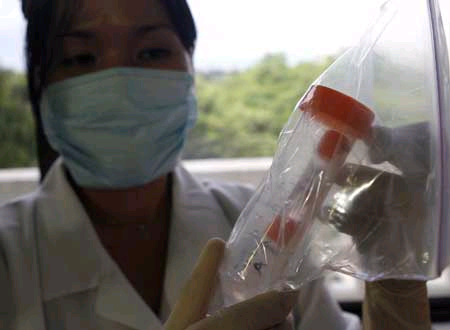| Study Confirms H1N1 Flu Virus Found in Swine Same as in Humans
 |
|
A laboratory technician shows a testing kit from the U.S. Center Disease Control (CDC) on how to determine the presence of the new H1N1 flu virus, formerly referred to as the swine flu, inside the laboratory of the Philippine Research Institute for Tropical Medicine at Muntinlupa city, south of Manila, May 13, 2009. The new H1N1 flu virus could still mutate into a more virulent form and spark an influenza pandemic that could be expected to circle the globe up to three times, the World Health Organisation said on Tuesday.(Xinhua/Reuters Photo) |
The H1N1 flu virus found on infected swine at a Canadian farm is the same as the virus causing illness in humans around the world, Canadian scientists have confirmed.
Scientists at the Canadian Food Inspection Agency (CFIA)'s National Center for Foreign Animal Disease (NCFAD) have mapped the full genetic sequence of the virus found in swine from Alberta and confirmed that the virus on the infected swine is the same as on humans, the CFIA said in a press release on its website late Friday.
A portion of a total of 2,300 swine on the farm were found to be infected with the new virus in early May. The virus was believed to be transmitted by a worker who had returned from Mexico.
As scientists are trying to probe this new virus, this development will help scientists around the world better understand the virus and its effects on animals, the CFIA said.
Researchers are now focusing on how the H1N1 flu virus affects swine. Although more study is needed, early observations suggest that infected animals become sick and recover naturally, just as they would if exposed to influenza viruses commonly seen in swine herds at a global level, the agency said.
Ongoing CFIA research is examining whether or not other animals are susceptible to the virus. This information may be used to refine disease prevention and control measures. Studies are also underway to assess the effectiveness of current vaccines, and to develop better and faster diagnostic methods, it said.
(Source: Xinhua) | 